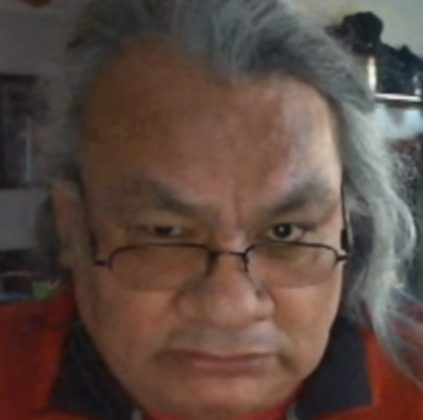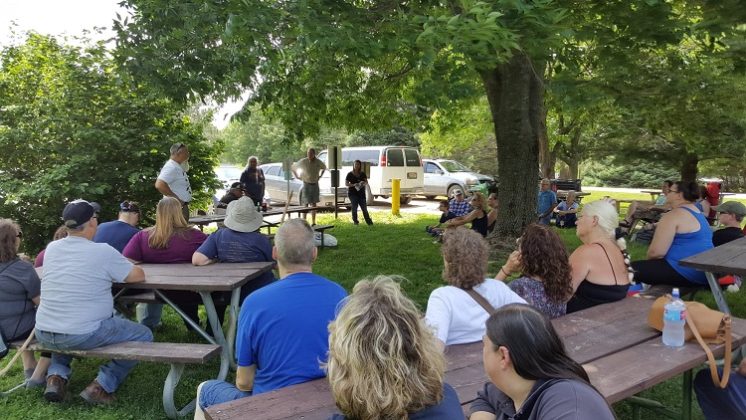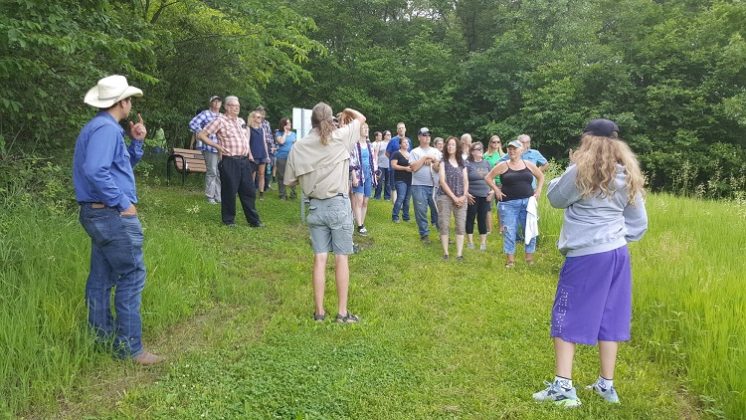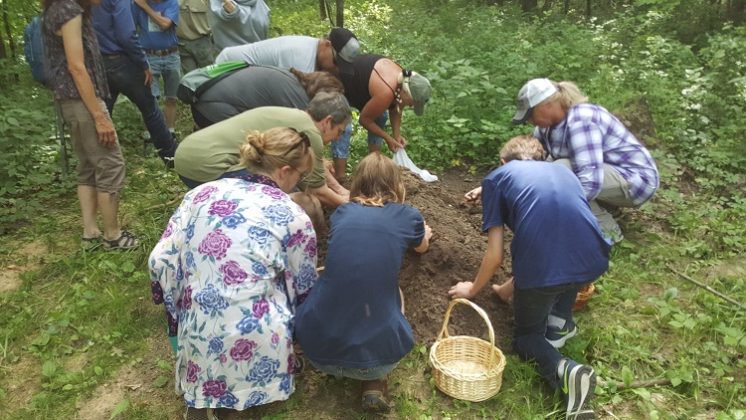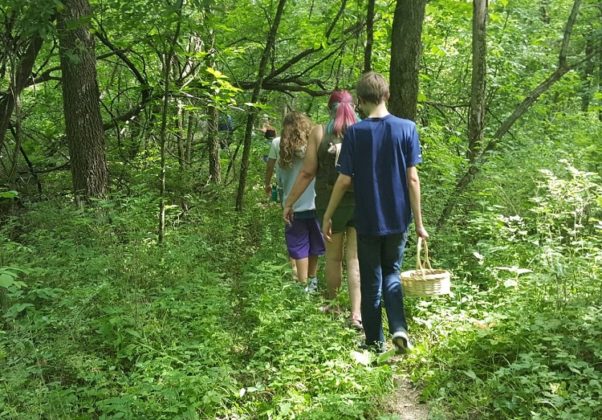On a ridge overlooking the South Raccoon River valley is a series of Native American burial mounds. These mounds, constructed by people whose cultural roots in North America extend to at least 3000 BCE, were desecrated by white colonial settlers in the mid-1800s.
The white men probably sought to loot the graves of their mortuary gifts or grave goods, which at this site might have included items such as silver, copper, galena, mica, chert, pipestone, chalcedony, obsidian, alligator teeth or marine shells, brought from as far away as the Great Lakes, the Gulf of Mexico and Atlantic seaboard.
By the 1980s, Jerry Kuehn had become the private property owner of the riparian land along the South Raccoon River, and he donated 350 acres to the Dallas County Conservation Board (DCCB) in order to establish the Kuehn Conservation Area. Thanks to additional gifts and acquisitions, this public area now extends to more than 1,000 acres.
In Iowa the burial sites of Native Americans came under the protection of the Office of the State Archaeologist in 1976, yet the large hole remained at the Kuehn mound on the South Raccoon River, evidence of a wound that would not heal.
Since 1999, the Native American peoples have joined with whites in the annual Prairie Awakening-Prairie Awoke Celebration at Kuehn is order spiritually to heal this wound to the culture and this desecration to the burial grounds of the Native Americans.
In accord with the Native American spiritual traditions, the mounds have been healed by means of drumming, songs, dances and ceremonies. The healing continued Saturday when Native American elders led about 75 people in a ceremony at the desecrated mound.
In imitation of the practice of the original inhabitants of the land, the participants reverently carried soil upward from the riverside to the ridge crest, led by DCCB Naturalist Mike Havlik.
We shall not profane the ceremony at the mound with a detailed description of it but will only say that the participants, led in ceremony by Lakota Medicine Man Galen Drapeau or Eagle Pipe Man, were visibly moved, and the spirit in the sky gave a sign the propitiatory sacrifice was accepted.
Prior to the ceremony, the participants heard wise words from the DCCB Environmental Education Coordinator and Naturalist Chris Adkins, Sisseton Wahpeton Oyate member Rob Knuth and Director of the Bioarchaeology Program in the Office of the State Archaeologist Lara K. Noldner.
“When you’re part of something and understand it, you don’t desecrate it,” said Knuth. “You begin to realize that the effect is like a stone in the water. The ripples go out.”
Knuth presented Noldner with a ceremonial stone and asked her to throw it in the waters of the South Raccoon River as a way to send out new and healing ripples.
In her turn, Noldner discussed the archaeology of mound building in Iowa, including the changes seen from the Early and Middle Woodland Periods to the influence of the Hopewell culture and the Later Woodland and onward to the Mississippian culture of mound building.
Noldner described the different kinds of earthworks and mound burials and said that as of 2015, 987 conical mound sites, 356 linear mound sites, 171 effigy mound sites, 70 habitation-mound combination sites, 50 non-mound earthworks and 250 prehistoric cemeteries have been located in Iowa. Every year sees more, she said.
“Because the vast majority of Iowa lands are privately owned,” Noldner said, “we rely a great deal on the stewardship of Iowans to protect known burial sites, which include ancient and historic cemeteries and constructed mounds and other earthworks.”
Drapeau and Knuth then shared stories of these mounds and their builders and explained the mounds’ meaning and purpose as seen through the eyes of the Native American culture.
This year’s Prairie Awakening-Prairie Awoke will be held Saturday, Sept. 7 from 3-7 p.m. at the Kuehn Conservation Area. The 2019 theme is youth, and a Youth Drum, along with a contingency of youth dancers, will share the story of the Meskwaki Nation through their drumming, song and dance. The DCCB will unveil its Buffalo Wallows project, and Dallas Chief Eagle will again share his messages through a Hoop Dance presentation and a bonfire audience-participation Hoop Dance.





